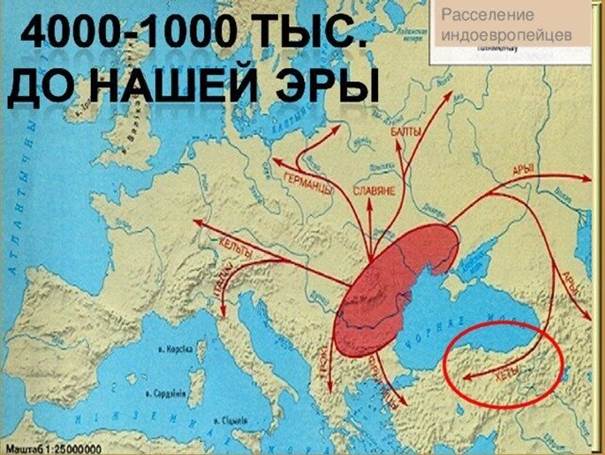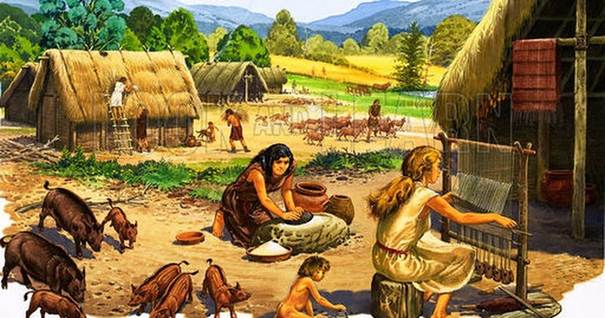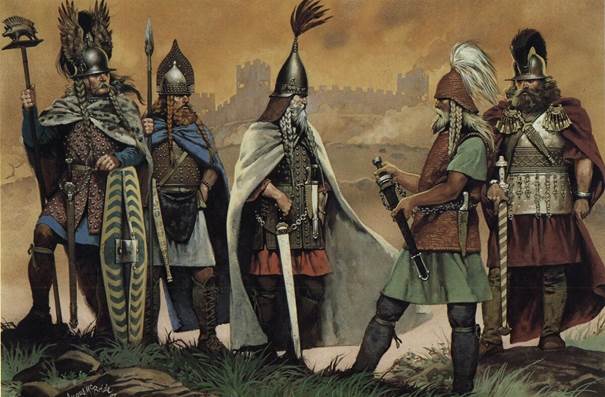Slavs and Germans: Brothers or Enemies?
There is no more cruel enmity than a blood feud. The greatest enemy of the Jews is their closest relatives, the Arabs. The Koreans, having divided their already small peninsula in half, have been at war with each other and have not been able to reconcile for 70 years. In the same way, the Slavs and the Germans, fraternal peoples in general, having separated in antiquity, came together many times in cruel wars. And it all started so well!

The most widespread Kurgan hypothesis in scientific circles claims that at least 5,000 years ago, the steppes of southern Russia and Ukraine were occupied by Indo-European peoples. Being part of a common linguistic community, they grew, multiplied, and at one point, when the land could no longer feed everyone, they began to migrate to all corners of the world.
If we consider the western way, the ancestors of the Greeks were the first to leave, then the future Celts and Latins went on a campaign. There were not so many people left in place now, and the lands of the ancestral homeland were still able to feed everyone.
Therefore, the unity of the Slavs and Germans lasted longer. Nevertheless, the westward movement continued, and differences between the previously close tribes began to grow. By the first millennium B.C., those who had moved away from their original habitats to the west of the Baltic Sea had formed a distinct group that the Celts called Germans.

They gradually increased in number, fought now with the Gauls, then with the Romans. When free land became scarce, the return movement to the east began, where the Germans again clashed with the Slavs. By that time, the old unity had been thoroughly forgotten.
From the beginning of the Common Era, the Goths and related peoples slowly migrated from Scandinavia through Poland to Ukraine. First they met with the Slavic tribe of the Venedi, and then with a new political entity – the Antes.
At first, their coexistence was peaceful, because there was a common enemy – the Roman Empire. In the middle of the 3rd century, there was a protracted Scythian war, in which the barbarians participated, among other things, the Slavs and Germans under the leadership of the latter.
By the end of the 4th century, the Goths were trying to conquer the tribal alliance of the Antes. Despite the successful outcome of the war for them, it was not possible to take advantage of the victory due to the untimely attack of the Huns. Soon the Slavs were subjugated by the newcomers from the steppes, and the Germans were forced to withdraw to the borders of the Roman Empire.

The Slavs participated in the campaigns of the Huns to the west, their wars with Rome and the barbarians, but did not show much agility. Nevertheless, faithful service to the nomads allowed our ancestors to settle throughout Central and Eastern Europe.
In 623, the first state in the history of the Slavs was founded, the state of Samo, which some sources consider to be a Frankish merchant. Despite this, after the overthrow of the Avar yoke, the Slavs fought mainly with the Germanic tribes, who, after their initial outflow to the west, decided, nevertheless, to arrange a “drang nach osten”.
The Germans, who had created their states a couple of centuries earlier, had a great advantage in this struggle. At least half of the territory of modern Germany is occupied by former Slavic lands.
Clearly, there was no longer any mention of kinship. The Slavs cheerfully fought with the Holy Roman Empire in order to preserve their way of life and their gods, whom their more advanced brethren had betrayed by accepting faith in Christ.
